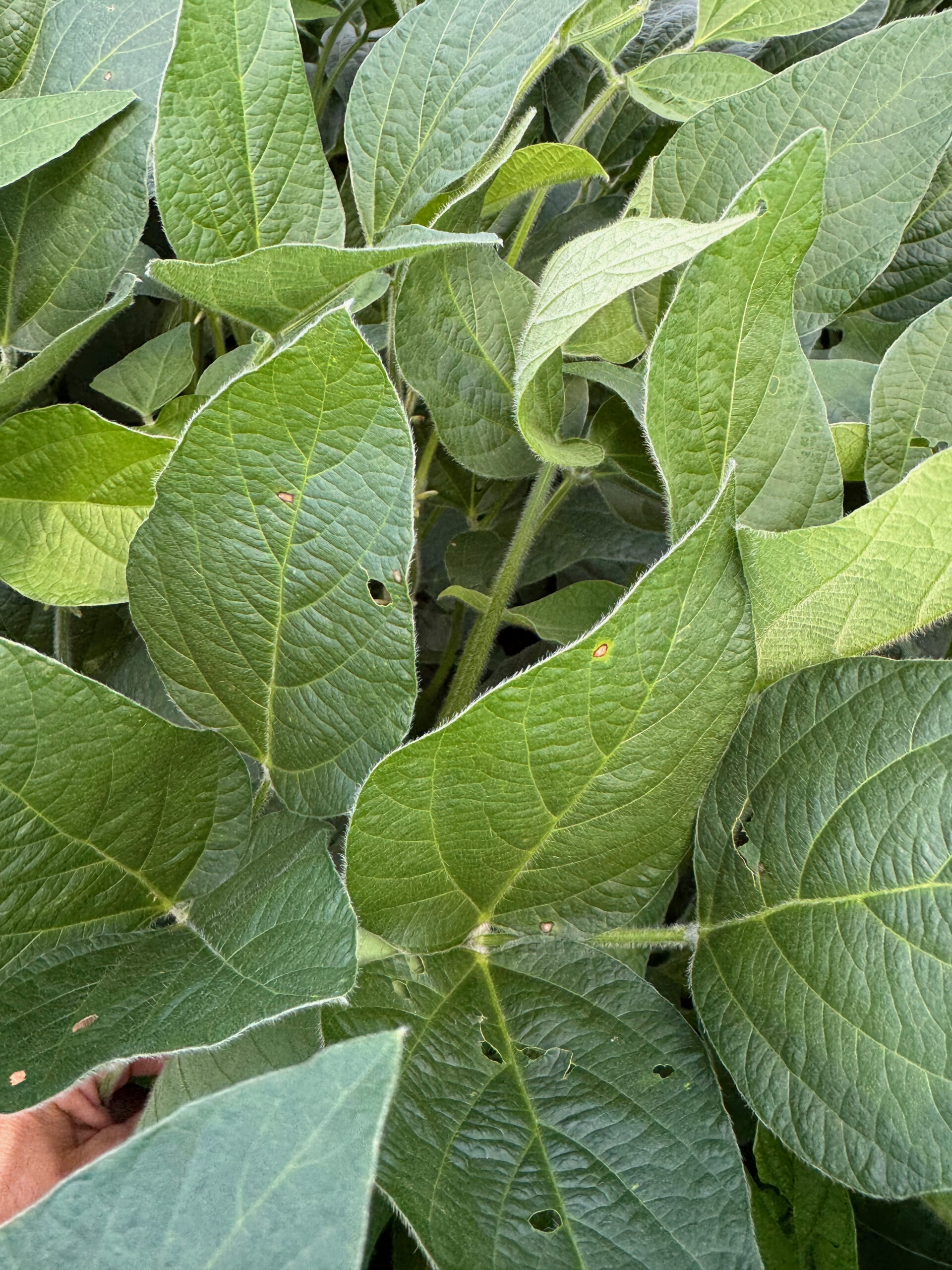Dr. Jason Bond and Dr. Ahmad Fakhoury at Southern Illinois University (SIU) recently sent our team an update on what foliar diseases they have been observing the past few weeks at the SIU research sites.
Frogeye leafspot
- Foliar fungicides were sprayed at their site in Shawneetown, IL at the R3 growth stage on July 26. They could not find frogeye leafspot that day, but there was significant septoria brown spot affecting the lower canopy as well as some target spot.
- On Friday, Aug. 2, they started seeing frogeye leafspot on most plants. Then, on Aug. 8, they saw that frogeye leafspot had increased significantly in the incidence and severity of the disease in their non-treated areas.
- The increase of frogeye leaf spot in just 6 days surprised them. Dr. Bond is convinced the frogeye leaf pathogen was already in the field by July 26. The frogeye leaf pathogen has a 9 to 14 day incubation period before symptoms show, and every year, it surprises Dr. Bond how it can hide out.
Dr. Bond explains, “Frogeye leaf spot (FLS) is also moderate to severe in many fields. We have not seen this level of FLS in at least 5 years.”
“At this time, frogeye leafspot is the most significant concern. However, with the weather that we have had, septoria can also rob three to six bushels per acre. Target spot, in most years, does not have time to move into the upper canopy to impact yield in our region, but it can in continuous soybean fields as well as during the right weather conditions. Most of the topline, multiple active ingredient fungicides have done well to control frogeye leafspot in our trials; however, fungicides will vary greatly at stopping septoria and target spot,” he shares.
Remember that there are resistant isolates of the frogeye leafspot pathogen that are resistant to strobilurin fungicide mode of action or (Group 11) fungicides. Go to the Fungicide Efficacy for Control of Soybean Foliar Diseases for ratings on how well products rank against diseases such as frogeye leafspot, septoria brown spot, and target spot.
Sudden death syndrome
“Sudden death syndrome (SDS) of soybean is on fire at the SIU Valmeyer research site. We are in our third week of disease rating, and in most years, we would only have one rating interval at this point of the season. As we drive to the location, we are passing many fields also showing symptoms typical of SDS. Occasionally, we see fields with the entire field showing large swaths of scorched leaves. We have not seen this incidence and severity since the early 2000s. We are seeing quite a bit of SDS even in sandy fields in southeastern Illinois,” Dr. Bond adds.
Remember, the SDS foliar symptoms can look very similar to other soybean diseases such as brown stem rot, red crown rot, and stem canker. This is because the fungal pathogen of all these diseases sends a toxin up to the leaves that can cause the same interveinal leaf necrosis or leaf symptoms that you saw in this field. Go to Sudden Death Syndrome Still Exists for steps on how to help you diagnose SDS and rule out other diseases. If you suspect red crown rot in your soybeans, you can go here to get information on how to sample and get a free diagnosis.
And on another note, Dr. Bond added that they detected southern corn rust on Aug. 7 in their corn locations in Carmi.
The message remains: don’t stop scouting soybeans for foliar disease.




 and then
and then